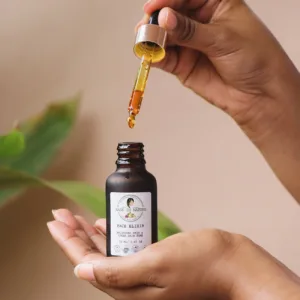
Pomegranate
Synonyms: Apple of Granada, Grenadier
Scientific Name: Punica granatum L.
Family: Punicaceae (pomegranate family)
Habitat
From Turkey, the Caucasus (Armenia, Azerbaijan, Georgia, Dagestan), Tajikistan, Turkmenistan and Uzbekistan eastwards to Iran, Afghanistan, Pakistan and India.
Constituents
Tannins, piperidine alkaloids, polyphenols, oxalic acid, malic acid, ascorbic acid, estrone (natural estrogen), punicic acid.
Description
The pomegranate is just as we expect the Far East to be: opulent, deep-red and heavy on the outside, and on the inside full of plump, juicy cushions in which we find the seeds. Around 400 in number, they huddle together within structured compartments so tightly that they can only be removed with difficulty. The outside of this striking fruit – which is botanically a false berry – looks hard and leathery. It grows on trees which can reach a height of up to 16 feet/5 meters, although cultivated plants are usually pruned to shrub form. From July to September its branches bear large red flowers with a striking, crown-like calyx. These produce the sought-after fruits which ripen from September to December. Incidentally, unlike other fruits pomegranates do not continue to ripen after picking. Botanists describe such fruits by the curious technical term “non-climacteric fruit”.
Uses
Pomegranates not only taste good, they have great health benefits. They are thought to be good for the stomach, beneficial for digestion, arteriosclerosis, hypertension and healthy immune response and have a positive influence on menopausal complaints.
Interesting Facts
The name pomegranate comes from the Latin pomum = apple and granum = grain, a reference to the many seeds which the fruit contains. The Phoenicians, a people who formerly lived in what is now Lebanon and Syria, introduced the pomegranate to the Romans, who gave it its scientific name Punica.
People have been cultivating and using pomegranates for around 5,000 years. The oldest evidence of this comes from the Near East. While pomegranates are enjoyed as a fruit or syrup (grenadine) in most countries, in India they are used as a spice and the Iranians use them for cooking. Up until the Middle Ages folk medicine used pomegranate root, bark and boiled peel for worms.
In antiquity the red pomegranate with its abundance of seeds was regarded as the fruit of paradise, a symbol of fertility and immortality. In Greek mythology it was Aphrodite, the goddess of love, who planted the pomegranate on the island of Cyprus as a tree of life. The Roman goddess Juno held a pomegranate in her hand as a symbol of marriage, and brides wore a crown of pomegranate blossoms. The pomegranate also has a place in Judeo-Christian mythology. The Song of Solomon mentions pomegranate juice as the nectar of lovers, whereas in Christian art its meaning is reversed and it becomes the symbol of purity and virginity. The pomegranate has regal associations, probably because of the residual calyx which crowns its red fruit and is said to have inspired the shape of King Solomon’s crown. The imperial orb of the Holy Roman Empire of the German Nation, a symbol of power, was based on the pomegranate.
The Arabs probably brought the pomegranate tree to Spain around 800 to 900 CE, where it gave its name to the province and city of Granada. It still adorns the coats of arms of both the province of Granada and Spain itself.
The skin of the pomegranate furnishes a yellow dye which turns deep blue when combined with iron mordant and is used in the manufacture of oriental carpets.
Incidentally, the oldest European hothouse plant is a pomegranate tree. This tree, which arrived in 1653 via Venice, still stands today in the Herrenhausen Gardens in Hanover.
The Plant in our Products
Bask in Nature’s products containing Ingredients from Pomegranate Tree :


